Improve iron status of piglets with phytase
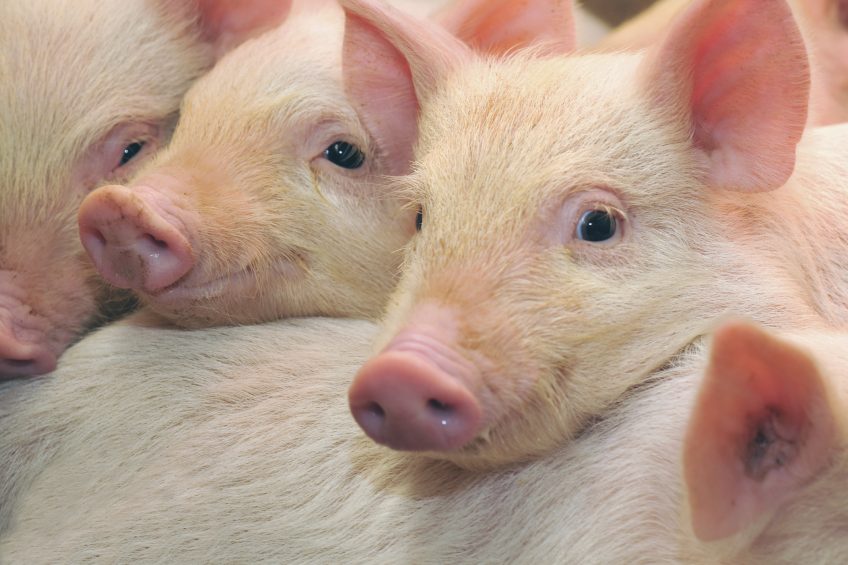
Phytases do interact with many other ingredients in pig feed – effects on zinc and phosphorus are well-known. Recent research also indicates that iron levels can also be positively affected when applying the right amount of phytase.
With today’s sows producing more pigs per litter, it is not uncommon to see lower average weaning weights as a consequence. Improving post-weaning pig performance is still a key focus of pig production systems and one area of interest that is worth investigating further is the iron status of piglets at weaning.
Typically, newly weaned piglets are injected with iron (200 mg) to avoid iron deficiency. This is important as piglets born indoors have a low level of iron stores and do not have access to oral iron in the form of soil while sows’ milk is low in iron. Without iron injection, pigs will become iron deficient or anaemic, characterised by an insufficient number of red blood cells, an insufficient amount of haemoglobin, loss of appetite, lethargy, increased respiration rate, poor growth and mortality.
Incidence of anaemia on commercial farms
With anaemia causing production losses, the iron status of piglets has received greater attention. A recent study in Canada has indicated that even with an iron injection, modern pigs from high production systems may still become borderline anaemic by weaning. This anaemia is often associated with the fastest growing or heaviest pigs at weaning.
The Canadian study looked at the iron status of over 1,000 piglets from 20 commercial farms. Each commercial farm had the management practice of using iron injection (200 mg) with newly weaned piglets, but even with iron injection there was still a higher percentage of piglets (≈35%) that were iron deficient or anaemic at weaning (see Figure 1).
Surprisingly, despite the pigs moving on to iron-supplemented feed, the level of iron deficiency further increased to 60% at 3 weeks post-weaning, and this was exacerbated by a higher level of zinc oxide in the diet. Furthermore, piglets that were anaemic at weaning were 0.83 kg lighter at 21 days post-weaning.
This research on commercial pig farms suggests that even with the use of iron injection, piglets are still susceptible to anaemia and poor post-weaning growth. Although generally seen as mitigating anaemia, iron injections may also have some potential negative effects associated with higher oxidative stress on the animal. Indeed, studies have indicated that the requirement for biological antioxidants increases in piglets that have had an iron injection.
Shift in dietary protein sources
One area of consideration that may impact the iron status of piglets is the change in starter feed diets over the last few years. Traditionally, piglet diets consisted of high digestible animal proteins such as fish, plasma, poultry and blood meals that contain high levels of iron. However, more recently with a focus on lower cost diets, coupled with a greater understanding of raw materials and digestible amino acid requirements of the piglet, a greater emphasis on vegetable-based proteins has resulted. With increasing vegetable proteins such as soybean meal, soy protein concentrates and corn distillers’ grain replacing animal proteins, the result is starter feed diets that are lower in dietary iron.
Even with iron supplementation (100 to 200 ppm from iron sulphate), the higher phytate levels associated with the high vegetable protein content results in a high phytate:iron ratio. Phytate is a strong chelator of divalent metal ions such as iron and so this dietary change, of increased dietary phytate and lower dietary iron, results in both lower levels and poor bioavailability of dietary iron. With marginal iron status on commercial farms, this trend towards higher vegetable proteins and phytate levels in starter feeds may potentially be a contributing factor to higher incidence of anaemia seen on farms today.
Unlocking the dietary iron potential
Traditionally 500 FTU/kg phytase has not been used in starter feeds (wean to 21 days) for phosphorus release due to the lower levels of dietary phytate associated with animal protein based feeds and the high use of zinc oxide. However, with dietary phytate well recognised as an anti-nutrient, the use of high doses of phytase in starter feeds to target >80% phytate destruction has resulted in improved post-weaning performance. Supplementation of 1,500-2,500 FTU/kg phytase (superdosing) aims to achieve near complete breakdown of phytate (IP6) and the lower isomers (IP5-IP2).
Even in small amounts, phytate and its lower isomers can reduce the bioavailability of protein and divalent metal ions. This has particular relevance to iron, with trial results at 21 days post-weaning showing that reduced phytate content in piglet ileal digesta was associated with an increase in haemoglobin levels.
Furthermore, a weaner pig study demonstrated that increasing doses of modified E. coli phytase linearly increased iron status measured as the proportion of haematocrit, indicating increased proportion of red blood cells in the blood (see Figure 2).
This improved iron status through increasing dietary iron supplementation or high doses of phytase, as measured by haemoglobin and haematocrit, was also reflected in an improved Average Daily Gain (ADG) and Feed Conversion Ratio (FCR) from weaning to 21 days (Figure 3). The highest performance at 21 days post-weaning was observed in pigs fed diets containing high iron (320 ppm) and high phytase (2,500 FTU/kg).
Figure 3 – Effect of dietary iron and phytase* dose on FCR from weaning to 21 day post-weaning.

With a continued focus on improving post-weaning performance, understanding the iron status of newly weaned pigs is worth further investigation. One application that may be beneficial in improving iron status of the post-weaned piglet is the use of high doses of a modified E. coli phytase to unlock the dietary iron potential bound by phytate.
Join 18,000+ subscribers
Subscribe to our newsletter to stay updated about all the need-to-know content in the pigsector, three times a week. Beheer
Beheer


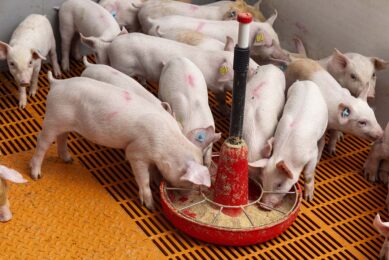
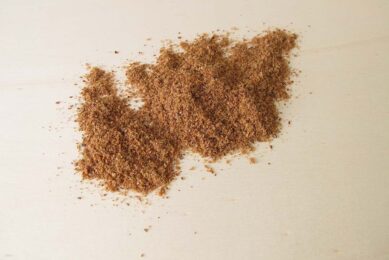
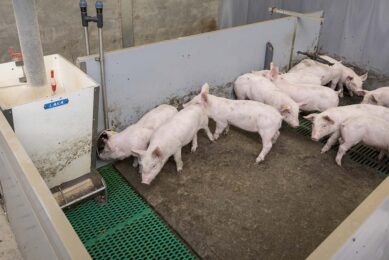
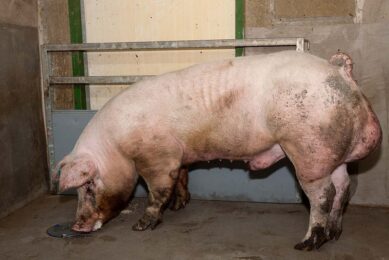





 WP Admin
WP Admin  Bewerk bericht
Bewerk bericht